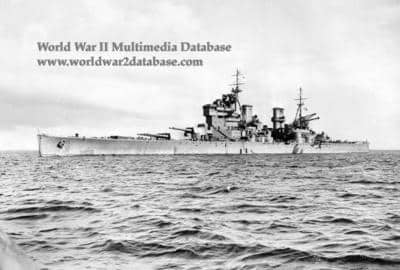Cruisers have served a vital role in the U.S. Marina de guerra, but they were built with asbestos in hundreds of components for decades. This put veterans at high risk for asbestos exposure and a later mesothelioma diagnosis. Veterans with asbestos illnesses can now seek benefits and compensation.
If you or a loved one have mesotelioma, cáncer de pulmón relacionado con el asbesto o asbestosis, you may be eligible for a large amount of compensation. Complete nuestro formulario para recibir nuestro Paquete de Compensación Financiera gratuito. Nuestro paquete contiene información completa sobre abogados con experiencia en mesotelioma en su zona, cómo presentar una reclamación para fondos fiduciarios de asbesto, cómo recibir su compensación en 90 días y más.


Paquete de compensación financiera GRATUITO
- Información sobre despachos de abogados que recuperarán su INDEMNIZACIÓN MÁS ALTA
- Aprenda cómo cobrar en 90 días
- Solicite su parte de $30 mil millones en fondos fiduciarios

Asbestos on Navy Ships
Cruisers and many other Navy ships contained asbestos. From approximately the 1930s through the 1970s, most Navy vessels were built with over 300 asbestos parts.
Amianto was used to insulate and protect against heat and fire. Although found throughout cruisers, asbestos use was heaviest in areas of the ships with a lot of heat: engine rooms, boiler rooms, steam pipes, and turbines.
About U.S. Navy Cruisers
Cruisers are navy warships that have varied in size and purpose over the years. According to the U.S. Navy, cruisers can take out airborne targets, as well as the ocean, under waves, and onshore targets.
A formal limit was placed on cruisers in 1922 by the Washington Naval Treaty. When World War II started, the treaty was off, and cruisers became the most used vessels once the Navy stopped using battleships.
Uses for Navy cruisers have included:
- Planting mines
- Shore raiding and bombardment
- Escorting merchant ships and troop carriers
- Gunfire support
- Air defense
Over many decades of use, the Navy fleet has included several types of cruisers:
- Heavy cruiser (CA)
- Large cruiser (CB)
- Armored cruiser (AR)
- Guided missile cruiser (CG)
- Guided missile heavy cruiser (CAG)
- Guided missile cruiser with a helicopter (CGH)
- Guided missile cruiser, nuclear powered (CGN)
- Guided missile cruiser light (CLG)
- Guided missile cruiser light, nuclear powered (CLGN)
- Large command ship (CBC)
- Command cruiser (CC)
- Command light cruiser (CLC)
- Light cruiser (CL)
- Anti-aircraft light cruiser (CLAA)
- Scout cruiser (CS)
- Strike missile cruiser (CSG)
- Strike missile cruiser, nuclear powered (CSGN)
- Aviation cruiser (CLV)
Today, six nations worldwide operate cruisers, including the United States, Italy, and Russia. The U.S. currently has 22 Ticonderoga-class guided-missile cruisers in the Navy fleet.
Where Was Asbestos Used on Cruisers?
From the late 1920s until the late 1970s, asbestos was heavily used to construct and repair navy cruisers. Cruisers contained asbestos in:
- Aislamiento
- Calderas
- Revestimiento de tuberías
- Juntas
- válvulas
- Packing
- focas
- Piso
- Ceiling panels
- Equipo de extinción de incendios
- Gunner gear
- Ropes
- Textiles
- Deck matting
Asbestos was heaviest in high-heat areas of cruisers. But it was truly everywhere in these ships, even in sleeping quarters and galleys.
Which Navy Cruisers Had Asbestos?
The following are among a few of the cruisers are confirmed to have asbestos with their commissioning dates:
- USS Belknap, 1964
- USS California, 1974
- USS Galveston, 1958
- USS Halsey, 1963
- USS Josephus Daniels,1965
- USS Jouett, 1966
- USS Mississippi, 1978
- USS Little Rock, 1944
- USS Oklahoma City, 1944
- USS Astoria, 1943
- USS Biloxi, 1943
- USS Duluth, 1944
- USS Manchester, 1946
- USS Miami, 1942
- USS Providence, 1944
- USS Wilkes-Barre, 1944
- USS Denver, 1942
- USS Canberra, 1943
- USS Dayton, 1945
- USS England, 1963
- USS Chicago, 1945
- USS Duluth, 1944
- USS Guam, 1944
- USS Pasadena, 1944
- USS Pittsburgh, 1944
- USS St. Paul, 1945
- USS Tallahassee, 1943
- USS Topeka, 1944
- USS San Diego, 1942
- USS Oregon City, 1946
- USS Quincy, 1943
- USS Baltimore, 1943
- USS Helena, 1945
- USS Los Angeles, 1945
- USS Worcester, 1948
Who Was Most at Risk of Asbestos Exposure on Cruisers?
All Navy veterans are at a heightened risk of developing mesothelioma and other asbestos-related diseases, especially those who served before the late 1970s.
Veteranos responsible for repairing or upgrading cruisers had to pull out parts from the ships with asbestos, resulting in airborne asbestos fibers permeating the air. They inhaled the tiny, fine, and odorless asbestos fibers.
Veterans who held the following job roles in the Navy are also at risk:
- electricistas
- Soldadores
- Fontaneros
- trabajadores de la construcción
- Pintores
- Instaladores de tuberías
- Boilermakers
- Aisladores
- Crew members aboard the cruisers
Crew members were exposed to the hazardous mineral almost daily. As they performed their duties aboard cruisers, they were around asbestos anywhere on their vessels.
Además, numerous crew members worked in small rooms with inadequate ventilation, which heightened the risk of developing mesotelioma maligno and other asbestos illnesses even further.
Children and spouses of veterans are at risk as well. Since workers didn’t have proper protection when working aboard cruisers, they would come home with asbestos fibers embedded in their work clothing, hair, and skin. This resulted in second-hand exposure for family members.
A History of Cruisers in the U.S. Navy
The term cruiser has been used for hundreds of years but didn’t have a consistent meaning until the mid-1800s. This was when it became an official classification in the U.S. Navy. Still, the purpose and design of this type of ship were highly variable until the early 1900s and World War I.
Cruisers in World War I and the Interwar Years
When the U.S. entered WWI, it deployed about 30 cruisers for convoy, patrol, and escort missions. Later in the war, cruisers also planted mines. The USS Baltimore planted mines north of Ireland and along the coast of Norway.
After WWI, the Washington Naval Treaty of 1922 limited the construction and size of Navy cruisers. The treaty responded to rising tensions and a fear of an international arms race.
According to the treaty, U.S. Navy cruisers could not be more than 10,000 tons. Their guns had to be less than eight inches. Despite the limitations, the Navy commissioned more cruisers during this period to put people to work during the Great Depression.
World War II Cruisers
The treaty restrictions were lifted at the start of WWII. The U.S. Navy deployed around 100 cruisers during the war. They acted as convoy escorts and provided defense and gunfire support.
The cruisers were vital in the response to the advances in aircraft warfare. A single vessel couldn’t survive an air attack, so the Navy built many more cruisers and transitioned to using larger fleets that could attack and neutralize aircraft.
Korea and Vietnam
During the Korean War, aircraft carriers became increasingly important in warfare. Cruisers could not go up against air attacks nearly as well. The Navy modernized cruisers with better guns to provide more effective support.
Cruisers saw a resurgence during the Vietnam War and were used for gunfire support. Heavy cruisers like the USS Canberra were vital in destroying shore batteries in North Vietnam. They also became more important in communications.
The Cold War and Modern Cruisers
Cruisers contributed to the blockade of Cuba in the 1960s to prevent Soviet weapons from reaching the island nation. The cruiser USS Long Beach became one of the first nuclear-powered vessels in the Navy in 1964.
The Navy began updating Ticonderoga-class guided-missile cruisers in the 1980s. They received updated combat systems. Today, the Ticonderogas are the only cruisers left in the U.S. Navy.
Benefits and Compensation for Navy Veterans With Asbestos Illnesses
If you are a Navy veteran who served on cruisers with asbestos, you are at an increased risk of mesothelioma and other asbestos illnesses.
If you have been diagnosed with one of these illnesses, you can seek compensation through several sources:
- VA Benefits. The U.S. Department of Veterans Affairs rates mesothelioma and asbestos lung cancer as 100% disabling. You could be entitled to full monthly disability compensation, and more if you have dependants. Veterans with asbestos illnesses can also apply for compensation for home care. Families of deceased veterans can claim benefits too.
- VA Healthcare. Mesothelioma is a difficult illness to treat. If you are a veteran, you can find specialist care at VA facilities. A few VA medical centers have mesothelioma and asbestos specialists.
- Mesothelioma Lawsuits. Veterans cannot sue the Navy or federal government for asbestos exposure. You can, however, sue asbestos companies that supplied the Navy to seek damages.
- Asbestos Trust Fund Claims. You cannot sue an asbestos company that went bankrupt. These companies set up trust funds that you can make a claim with to receive compensation.
Your best ally in seeking benefits and compensation for asbestos exposure is a abogado especializado en mesotelioma. Contact an experienced attorney for more information and guidance on getting the compensation you deserve.
Help and Resources for Veterans and Their Loved Ones
If you’ve been diagnosed with mesothelioma, asbestos-related lung cancer, or asbestosis, you may qualify for significant compensation. Remember to fill out our form to get your free Financial Compensation Packet, with information on experienced asbestos and mesothelioma lawyers in your area. If you need additional assistance, contact us toll-free at 800-793-4540.

Pablo Danziger
Revisor y editorPaul Danziger creció en Houston, Texas, y se licenció en Derecho en la Facultad de Derecho de la Universidad Northwestern en Chicago. Durante más de 25 años, se ha dedicado a representar a víctimas de mesotelioma y a otras personas afectadas por la exposición al asbesto. Paul y su bufete han representado a miles de personas diagnosticadas con mesotelioma, asbestosis y cáncer de pulmón, obteniendo indemnizaciones significativas para los clientes lesionados. Cada cliente es fundamental para Paul y atenderá todas las llamadas de quienes deseen hablar con él. Paul y su bufete se encargan de casos de mesotelioma en todo Estados Unidos.
Conéctese con el abogado especializado en mesotelioma Paul Danziger
Referencias
- Derdahl, G. and DiGiulian, T. (2021, May 15). History and Technology USN Ship Designations. NavWeaps.
Recuperado de: http://www.navweaps.com/index_tech/index_ships_list.php - Till, J.E., Beck, H.L., Boice, Jr., J.D., Mohler, H.J., Mumma, M.T., Aanenson, J.W., and Grogan, H.A. (2019, January 8).
Recuperado de: https://www.tandfonline.com/doi/citedby/10.1080/09553002.2018.1551641?scroll=top&needAccess=true - U.S. Naval Academy. (n.d.). Surface Warfare. Cruisers & Destroyers.
Recuperado de: https://www.usna.edu/SurfaceWarfare/What/Ships/cruds.php - Centro de Estudios de Enfermedades y Lesiones Relacionadas con la Guerra. (6 de septiembre de 2022). Exposición al asbesto.
Recuperado de: https://www.warrelatedillness.va.gov/WARRELATEDILLNESS/education/factsheets/asbestos-exposure.pdf - Naval Technology. (n.d.). Ticonderoga Class Aegis Guided-Missile Cruisers.
Recuperado de: https://www.naval-technology.com/projects/ticonderoga-class/
